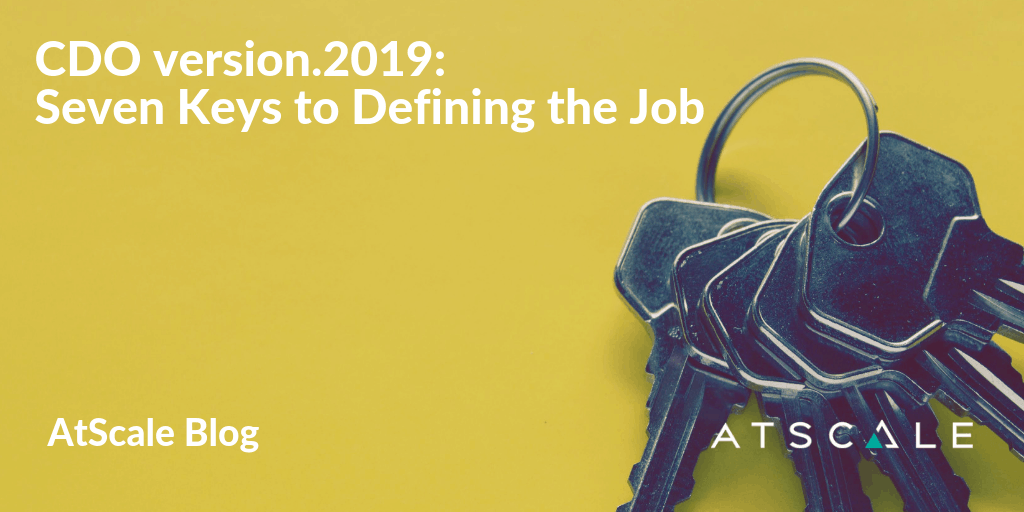August 5, 2019
Supercharge your DataOps: CIO and CDO unite to create a shared data intellect
The Chief Data Officer is on the rise. A remarkable number of companies have made this high-profile addition to the C-suite over the past year, confirming the urgency of data-driven decision making at the highest levels of the enterprise. However, just as the title proliferates, it is at risk of being misunderstood. To be successful, “it’s about being the centre of gravity and not control,” suggests Gartner’s chief data officer survey.
Evidence of this comes from an excellent new report from NewVantage. Its annual Big Data and AI Executive Survey, released in late January, shows that Chief Data Officers are in place at 67.9% of the companies surveyed. But here’s the kicker: NewVantage, along with analytics guru Tom Davenport, say, that the role remains ill-defined with the consequence that CDO’s may be ill-equipped to address the challenges.
38.2% of firms want an external change agent while 32.4% want a company insider; 48.1% see the CDO as having primary responsibility for data while 28.4% see no single point of accountability; 17.5% of executives view the CDO role as interim or unnecessary.
We predict these numbers will change as the definition of the CDO role evolves and solidifies.. But the current data is concerning. It is reminiscent of issues that surrounded the chief marketing officer post when it emerged around 2010 as a vague title with vague responsibilities, with a high-churn rate. Now, it has produced dramatic improvement. No one would tell Bank of America CMO Meredith Verdone that her job is vague. No one would tell CVS CMO Norman de Greve that his role is interim. The CDO role doesn’t have the luxury of time to evolve, because data moves faster than marketing trends. The CDO, if it assigned business value rather than job description cred, will be a center of influence and action.
As the CDO role finds its footing, here are the seven keys to focus the job and its integration into the C-suite:
- Make the CDO mission simple and clear: Here’s one we like: protect and deploy data assets. It clarifies the necessary priorities of compliance and security and sets the stage for using data analytics as an active strategy.
- Assign business value: Allowing a CDO to navigate internal structures and politics can cost the enterprise valuable time, competitive execution and revenue. CDOs are arriving at a critical time. The business value assigned to the CDO should be no less than revenue gained through data analytics and usage and the ability to make those analytics actionable. The CDO is responsible for growth in data usage in a similar way that a CMO is responsible for growth in brand awareness.
- Set an urgent tone: AI is unfolding rapidly; cloud computing is dominating and the entire data architecture needs an upgrade to support these trends. The CDO can add value immediately by managing the cloud transformation to go beyond the current hybrid cloud environment and by unifying the data that lives in disparate sources. Cloud computing and its future are the most important point of focus for the CDO. But without agility, security and an analytics fabric, nothing else will work. The cloud won’t deliver results. AI will not deliver new data scale and data analytics won’t work. So while AI gets the press and the attention, cloud transformation should be the immediate priority.
- Educate: C-level execs need to raise their game in their knowledge of the complexities involved in data technology, aggregation and operational analysis. Generally, the CEO or CMO knows a lot about data security. They’re not as savvy about data deployment. Do they know where their data is? They need to find out. That’s why that C-level data officer is at the exec comm meeting. CDOs have the answers.
- View data as a shared asset: The CDO can push an enterprise toward transparency. Rather than allow departmental data silos to persist, the CDO can help transform those silos into a 360-degree view of all customer and operational insights. Next step: Correlate valuable data signals from all business functions, including areas like manufacturing and logistics.
- Unify and Virtualize Data: After making data a shared asset, it can be unified. Intelligent data virtualization allows business users to access and analyze data using the BI tools of their choice. Companies that virtualize their data provide a single interface to get consistent answers to their queries, accelerated query response time and reduced query costs.
- Prioritize Agility: Every time data is moved, it impacts cost, accuracy and time. By eliminating the need for additional data movement by implementing scalable processing of massive data sets, organizations can significantly reduce the costs of moving data, increase data “freshness” and optimize overall data agility.
The Chief Data Officer represents an opportunity to define the priorities and pain points for a company’s second most important asset: Data. Customers are the most important asset. We would argue that data, and the CDO, will drive customer value and revenue growth.


NEW BOOK